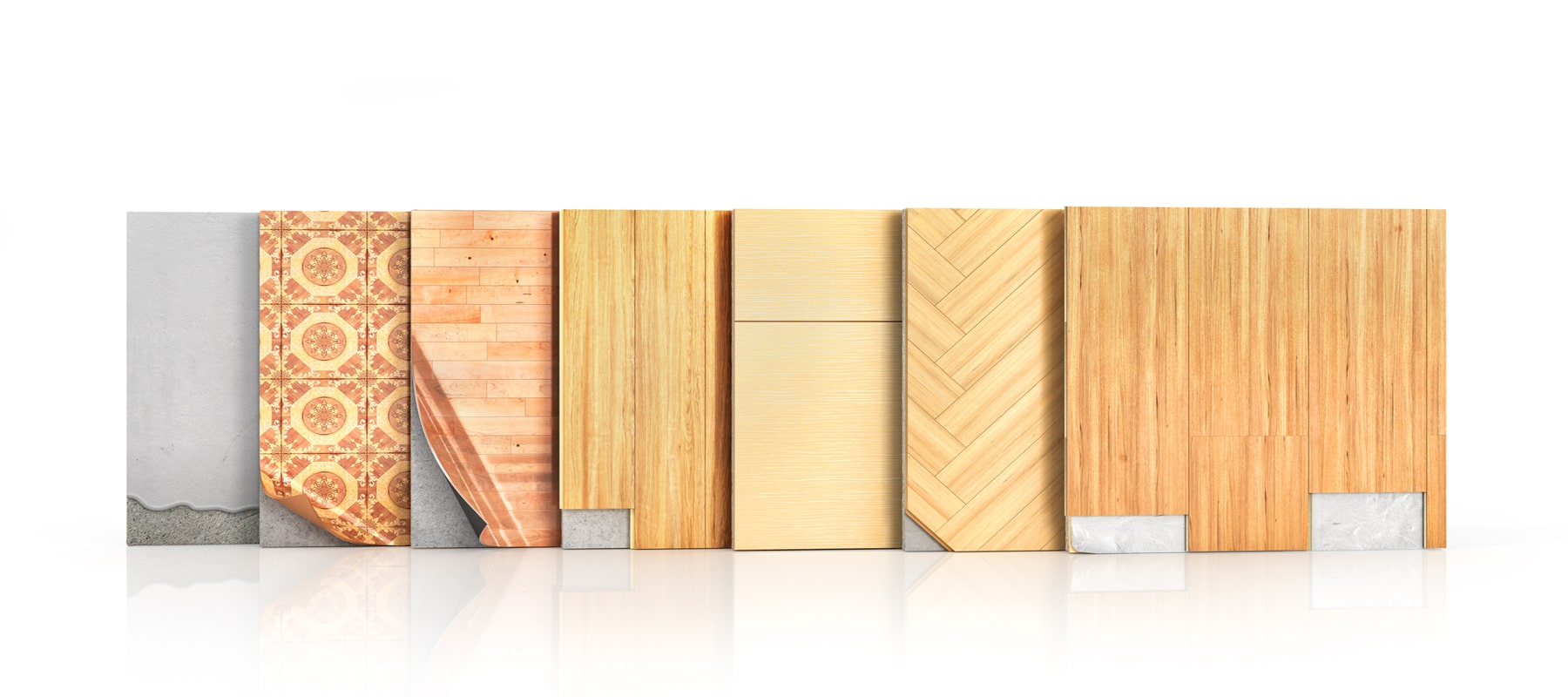How Much Does Linoleum Flooring Cost?
Last Updated: January 14, 2022
On This Page
Linoleum fell out of favor among homeowners after World War II but has experienced a comeback in recent years thanks to a more appealing color selection and growing interest in environmentally-friendly building materials. Available in sheets and tiles, linoleum floors are durable, low-cost, customizable, and appropriate for a wide range of applications.
Linoleum Floor Considerations #
Linoleum is made from linseed oil, wood flour, cork dust, limestone, resins, and mineral pigments. These all-natural ingredients are pressed together and mounted on jute backing. Aside from this basic composition, however, linoleum floors offer quite a bit of variability. The most common linoleum options are described below.
- Tiles vs. Sheets: Linoleum can be installed as sheets (6' x 7" width) or tiles (12" x 12" and 20" x 20" are common). Linoleum is easy to cut, so you can mix and match different linoleum colors and patterns for a customized look.
- Color and Pattern: Linoleum is sold in a wide range of traditional, retro, and modern colors as well as a number of different patterns, including solid, marbled, and flecked.
- Gloss: Choose from high, medium, and low-gloss linoleum.
- Thickness: The wear layer of linoleum flooring includes the entire flooring surface except for the jute backing. In general, a thicker wear layer is associated with greater durability. Several thicknesses, including 2mm, 2.5mm, and 3mm+, are available.
Linoleum Benefits #
Linoleum is a favorite among homeowners for reasons that include the following:
- Environmentally Friendly: Made without harmful chemicals, linoleum is non-toxic and biodegradable.
- Versatile: Linoleum can be installed over a variety of subfloors, including below-grade concrete. The material's water-resistance means that it can be used in kitchens, bathrooms, and laundry rooms. Perimeters, however, should be sealed with caulking to keep water from penetrating the linoleum substrate.
- Durable: Linoleum resists dents, scratches, stains, and gouges and is appropriate for high-traffic areas as well as households with pets and/or children. When properly installed and maintained (regular sweeping, mopping, and an annual coat of acrylic sealer are recommended), a linoleum floor can last 40 to 50 years or more. Some manufacturers offer warranties of up to 25 years.
- Cost: Linoleum is significantly cheaper than natural stone, hardwood, and ceramic tile.
Linoleum Flooring Costs #
- Linoleum sheet flooring typically costs $2 to $3 per square foot; linoleum tile may cost up to $5 per square foot.
- Plan on spending an additional $1 to $3 per square foot for linoleum flooring installation. Note that linoleum is not recommended as a DIY project. The material must be cut precisely and the spread adhesives required for installation are difficult to work with.
